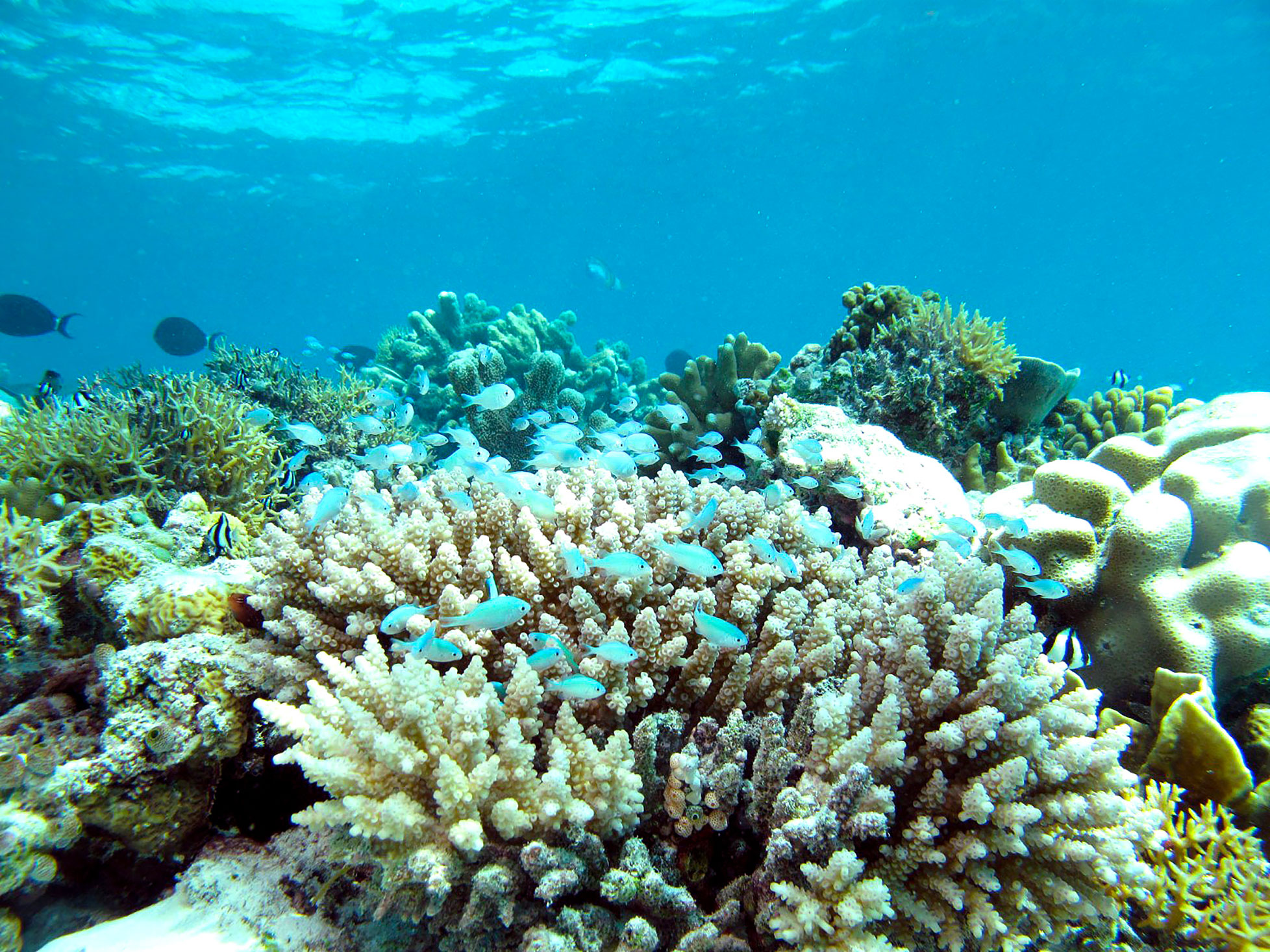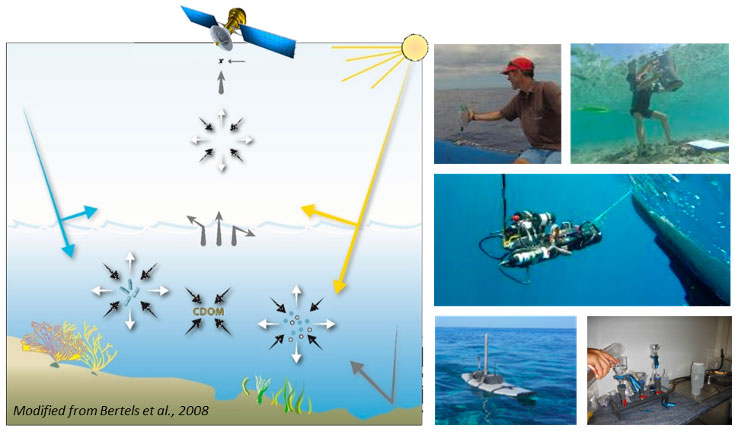BioEOS, a project for coastal biodiversity
Specialists in seagrass beds, coral reefs, seabed mapping, remote sensing, signal processing algorithms, machine learning, information systems, environmental managers, financiers and communication officers... The round table of presentations on 15 June 2023 included an impressive range of skills. The aim is to share the main lines of work and the organisational framework to be followed by the partners in the BioEOS project in conjunction with CNES.
Touria Bajouk, head of the BioEOS project at IFREMER, recalled the extent to which coastal biodiversity is under threat, despite being a source of numerous ecosystem services, and outlined the needs set out at the Paris conference on 12 March 2020: the need for data on living organisms, the need for observation tools that take account of the spatio-temporal variability of biodiversity, and the need for biodiversity monitoring and assessment indicators that distinguish between the effects of direct and global pressures, in particular to assist management.
To meet all these requirements, "the project is planned over five years" explains Touria Bajouk, who continues: "The first phase, under the SCO label, will enable us to refine our requirements and validate the concept. The second, more operational phase will consist of deploying the system via an appropriate interface and transferring it to other bioregions".
Project objectives
Based on time series of satellite images, BioEOS has set itself three main objectives:
- Characterising the spatiotemporal dynamics of biodiversity by monitoring "proxy metrics". This term refers to intermediate metrics extracted from satellite images that can be correlated with biodiversity measurements made by in situ observations;
- A better understanding of trajectories and prediction of their evolution thanks to a combination of biological and environmental data;
- Report on the state of biodiversity by producing indicators and mapping changes.
Spatial added valueWhen correlated with in situ information from national databases and measurement campaigns, and using high-performance algorithms, satellite data can reveal a wealth of information: estimated bathymetry, composition of the water and seabed, distribution of habitats or species, etc. from which indicators can be derived such as the state of coral reefs and seagrass beds. In fact, the team intends to take advantage of all the satellite sensors and merge their data to improve spatial and spectral resolution. Another major advantage is that their time series will make it possible to characterise evolutionary trajectories and detect large-scale changes.
Installation
The French islands of Oceania (Réunion, Glorieuses, Mayotte, Bassas da India) were chosen as pilot sites because of the large amount of in situ data already available and open.
The first stage will involve identifying and collecting biodiversity variables, from all data sources, and then constructing time series. This includes developing and validating algorithms (processing chain), producing indicators of the state of and changes in biodiversity, and understanding the flow of data required for all this processing over the long term.
To this end, a major campaign of in situ measurements is planned for November 2023, using, as far as possible, several synchronised satellite acquisitions (Pleiades, Sentinel, Prisma, EnMap).
|
◀︎ The different types of sampling (water column and seabed) to be acquired during the field survey of the BioEOS project in La Reunion island. © IFREMER |
|
We look forward to seeing you soon to follow the progress of this exciting project! A seminar is planned for the end of 2023. Alongside the BioEOS partners, it will bring together other participants from both the scientific community and those involved in the conservation of marine ecosystems.
BioEOS partners
Supported in its first phase by CNES and DEAL Réunion, the SCO BioEOS project is led by Ifremer in partnership with the Gipsa-lab laboratory, Ifrecor, INRAE, IMT, IRD, SHOM, Sorbonne University, the University of Mayotte, the University of Réunion and the University of Toulon.




